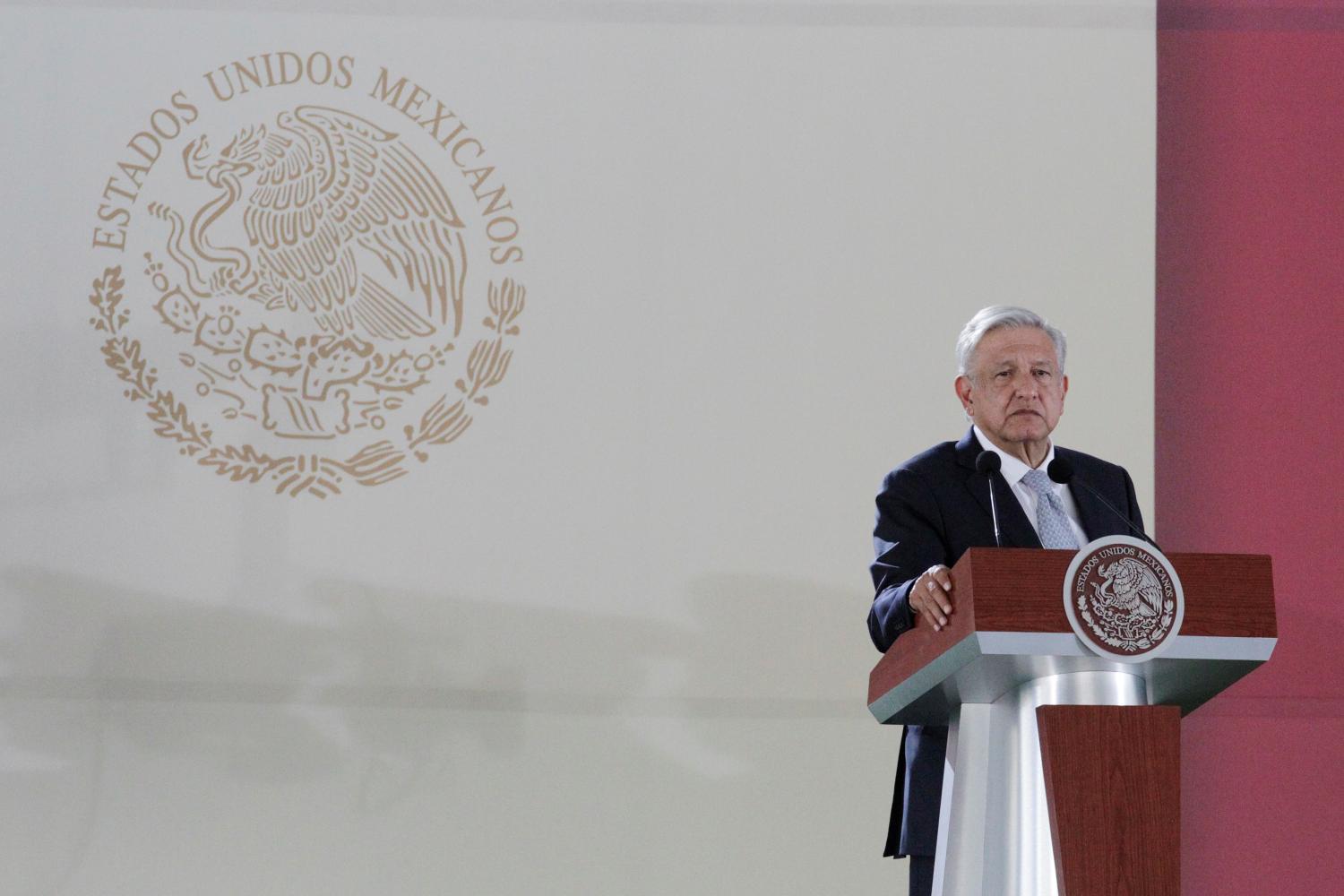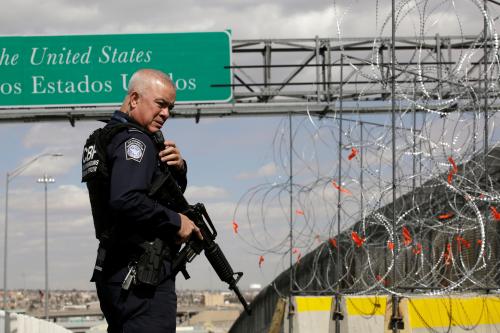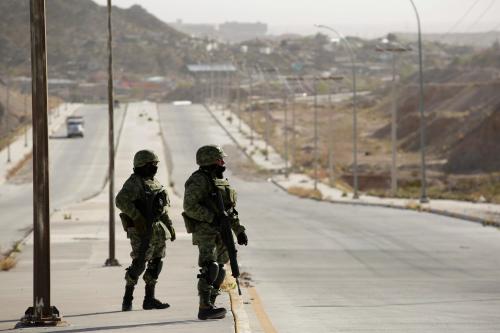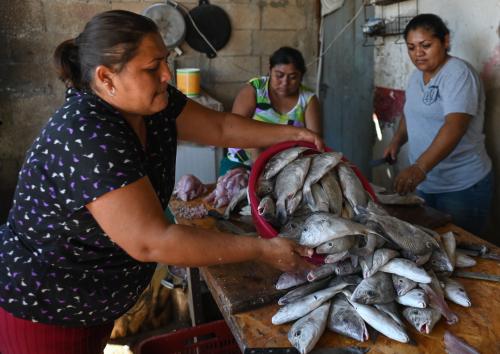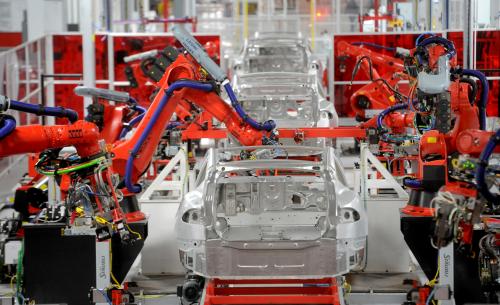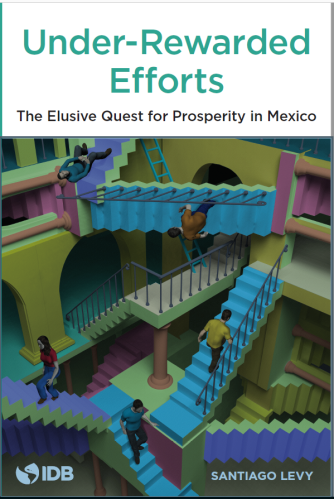Executive summary
Some three decades ago, Mexico made a bet on the global economy, and at a time when populism and protectionism are on the rise, the payoff is at risk. In response, Mexico must double down on its openness while addressing the critical structural problems, including corruption and inequality, that inhibit its domestic economy and led to the sweeping electoral victory of President Andrés Manuel López Obrador (AMLO) in 2018. This essay reviews Mexico’s economic progress and the challenges ahead as a new administration takes office at a time of significant stress on regional and global economic institutions.
For more than a half-century following the Mexican Revolution, the country’s foreign policy was based on the principal of noninterventionism, a not so subtle way of telling the United States and others not to meddle in Mexico’s domestic affairs. The economic equivalent was Mexico’s policy of import substitution, which raised tariffs and barriers to foreign investment designed to protect the country’s domestic industries from international competition. The two combined to make Mexico an insular country, and despite the significant economic expansion achieved in the decades following World War II, by the 1970s, Mexico’s economy and politics were showing signs of strain.
In the following decade, Mexico’s relationship with the world was flipped on its head. Instead of raising barriers in an effort to protect Mexican sovereignty, the country’s leaders made an audacious bet on the nation’s integration into the global economy, especially in North America. In 1986, Mexico joined the General Agreement on Tariffs and Trade (GATT), the precursor to today’s World Trade Organization, and then in 1994 took the dramatic step to join the United States and Canada to form the North American Free Trade Agreement (NAFTA). The results have been dramatic. In 1985, Mexico’s trade-to-GDP ratio was 26 percent, but by 2017 it was up to 78 percent, belying its status as a modern manufacturing powerhouse building goods on the integrated North American production platform.1 Yearly inflows of foreign direct investment increased from an average of just over 1 percent of GDP in the 1980s to approximately 2.5 percent during the past decade.2 Today, Mexico regularly ranks among the most cost-effective places to locate manufacturing operations in the world.3 In this sense, Mexico has become a model of successful integration into global value chains.
Mexico’s export-oriented economy is highly efficient and has served as a motor of economic development, but the current economic model faces two significant and distinct challenges. The first is a direct result of Mexico’s bet on its integration into the North American and global economy. At a time when U.S. (and some might say global) trade policy is shifting away from the open, rules-based system supported by the United States since the 1940s and toward a more mercantilist approach favoring protectionist tactics, Mexico’s dependence on the U.S. market is proving to be a greater risk than most had assumed. In 2017, Mexico sent more than 80 percent of its exports to the United States, relying heavily on access to the market ensured by NAFTA and the World Trade Organization system of preferential tariffs, both of which are under significant stress.4
The second challenge is rooted not in what Mexico has done, but rather what it has failed to do. Implicit in Mexico’s bet on economic openness was the idea that its advances in trade policy, coupled with the macroeconomic stability achieved through improvements in fiscal and monetary policy, would be sufficient to drive economic growth. Unfortunately, the export-fueled motor has not proven strong enough to overcome the significant drag created by multiple structural deficiencies and has instead propelled a part of Mexico forward while leaving much of the country behind. World Bank figures show that Mexico’s average annual growth of GDP per capita has been just over 1 percent since 1990. Despite important improvements in access to health care, education, and housing, poverty as measured by income remains stubbornly high, at above 50 percent.5 Weaknesses in the Mexican education system, insufficient energy and transportation infrastructure, a lack of access to credit, the still-limited rule of law, and a misalignment of incentives in the social insurance and tax regimes have combined to stifle growth and allow inequality to persist. Despite the fact that the near-term risks to the Mexican economy have quite a bit to do with U.S. trade policy and the global economic environment, the most important missing ingredient in Mexico’s economic outlook is a stronger domestic economy.
As a result, Mexico’s first priority must be a strategy for inclusive growth. At this point, it is quite clear that a small number of highly productive workers in a small number of highly competitive firms are not enough to bring broad-based prosperity to Mexico. Government programs can help address disparities through targeted infrastructure investments and a project to expand access to a high-quality education, but these must be accompanied by efforts to address market failures as a result of uneven contract enforcement, a problematic social insurance system design, and barriers that slow the growth of small and medium firms. To do so, the government must be judicious in deciding when to intervene and when to play the role of facilitator guaranteeing an even playing field and preventing market distortions. A pragmatic approach to economic management is required, along with a clear-headed view of both what has and has not worked.
One of the biggest benefits of NAFTA for Mexico was to lock in its domestic liberalizing reforms and to thereby give investors confidence that Mexico was a safe place to do business. As has been argued by one of Mexico’s original NAFTA negotiators, Luis de la Calle, in the face of threats to NAFTA and the broader trading system, it is incumbent upon Mexico to once again show the world that it is committed to a path of modernization, economic stability, and openness.6 Mexico’s decision to move forward with the Comprehensive and Progressive Agreement for Trans-Pacific Partnership (CPTPP) even as the United States withdrew was an important step in this direction. Recommitting itself to this economic path, even as new efforts are made to promote inclusive growth, is the best way to clear the cloud of uncertainty that has hung over the Mexican economy since 2017.
-
Footnotes
- “Comercio (% del PIB),” The World Bank, 2018, https://datos.bancomundial.org/indicador/NE.TRD.GNFS.ZS?locations=MX.
- Author’s calculations with data from “Foreign Direct Investment, net inflows (% of GDP),” The World Bank, 2017, https://data.worldbank.org/indicator/BX.KLT.DINV.WD.GD.ZS?locations=MX.
- Harold Sirkin, Micauel Zinser, and Justin Rose, “The Shifting Economics of Global Manufacturing,” Boston Consulting Group, August 19, 2014, https://www.bcg.com/en-us/publications/2014/lean-manufacturing-globalization-shifting-economics-global-manufacturing.aspx.
- Secretariat of Economy of the Government of Mexico, “Estadisticas de Comercio Exterior de Mexico,” 2018, https://www.gob.mx/cms/uploads/attachment/file/367215/Acum-Exporta-jun2018.pdf.
- Felipe Meza Goiz, “La Pobreza en México y la estabilidad macroeconómica,” Animal Politico, April 3, 2018, https://www.animalpolitico.com/blogueros-blog-mexico-como-vamos/2018/04/03/la-pobreza-en-mexico-y-la-estabilidad-macroeconomica/; and “Evolución de las Dimensiones de la Pobreza 1990-2016,” Coneval, https://www.coneval.org.mx/Medicion/Paginas/Evolucion-de-las-dimensiones-de-pobreza.aspx.
- Luis de la Calle Pardo, “Para enfrentar a Trump, no es plan B, sino el A,” El Universal, October 18, 2017, http://www.eluniversal.com.mx/columna/luis-de-la-calle-pardo/cartera/para-enfrentar-trump-no-es-plan-b-sino-el.
